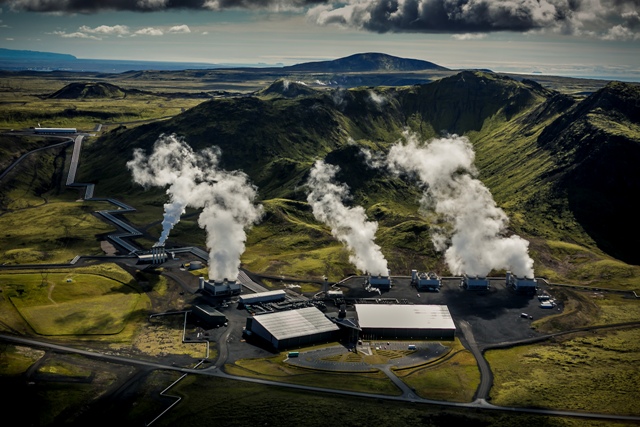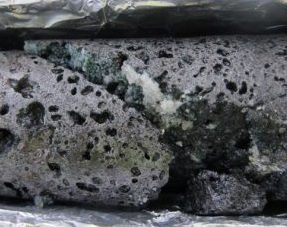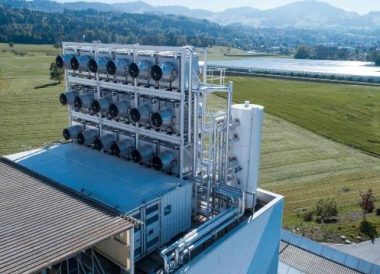
Iceland geothermal plant aims for negative emissions with new carbon capture project
by Cleantech Canada Staff

A team of researchers at one of the world's largest geothermal power plants will use two novel technologies to scrub carbon dioxide directly from the air and inject it deep underground where it will turn permanently to stone

The injection technology has been used at the Hellisheidi power plant in southwest Iceland for about five years. PHOTO: Arni Saeberg/Reykjavik Energy
REYKJAVIK, Iceland—Decreasing carbon dioxide emissions to zero is the ultimate goal of most clean energy and environmental initiatives. One Icelandic project is looking to take climate change mitigation a step further.
Earlier this month, on the slopes of an active volcano not far from Reykjavik, a research team installed a carbon capture device designed to pull CO2 directly from the air—the latest addition to a geothermal plant that’s ground zero for a new type of carbon sequester technology capable of turning the greenhouse gas into harmless stone.
The mutlimillion-dollar CarbFix project has been undergoing testing at the Hellisheidi power plant for about five years. Led by Reykjavik Energy with support from a number of institutional researchers and the financial backing of the European Commission, the technology involves dissolving CO2 in water and injecting the mixture into basalt rock formations several hundred metres below the surface. The acidic makeup of the mixture causes a reaction with the basalts that ultimately traps the CO2 in the rock.

The CarbFix process permanently traps CO2 in rocks. PHOTO: Sandra O Snaebjornsdottir/Reykjavik Energy
The CarbFix team has been storing CO2 that would have been emitted from the geothermal site for several years, but the installation of the
new direct air capture (DAC) unit will take the plant into negative emissions territory, the research team said.
It’s the type of project that’s likely to become more common as countries struggle to trim their CO2 emissions. Scientists are increasingly looking at removing carbon already in the air as a key technology to slow temperature increases and halt runaway global warming.
A number of companies are working on DAC technology—including Canada’s Carbon Engineering—but the Icelandic project will utilize a system developed by Swiss cleantech firm Climeworks.
Unlike conventional carbon capture technology, which can be added to coal plants or industrial sites, DAC pulls CO2 directly from the atmosphere and can be deployed virtually anywhere.
Edda Sif Aradóttir, head of the CarbFix project at Reykjavik Energy said the two technologies together could be used worldwide wherever basaltic rocks are found.
“By integrating the Climeworks and CarbFix technologies we create a solution that is deployable where we have basalt but independent of the location of emissions,” she said in a statement. “This is important to scale up the CarbFix approach on a global level.”
While the CarbFix system stores the CO2, Climeworks’ process traps atmospheric CO2 by drawing in ambient air into “collectors.” The technology uses a filter to chemically bond with the CO2, isolating it, while allowing oxygen to pass through the system back into the air. The company opened the first commercial facility of its kind at a waste recovery plant in Switzerland earlier this year.
“The potential of scaling-up our technology in combination with CO2 storage, is enormous,” Christoph Gebald, Climeworks’ founder and CEO, said in a statement. “Not only here in Iceland but also in numerous other regions which have similar rock formations. Our plan is to offer carbon removal to individuals, corporates and organizations as a means to reverse their non-avoidable carbon emissions.”
The Hellisheidi project will test how the two technologies work together on a small scale and whether it would be economical to roll out the process elsewhere.
While basaltic rocks cover about 10 per cent of the Earth’s surface and much of seafloor—meaning many counties could take advantage of the process—the technology has proven expensive so far. As of last year, researchers said the injection process alone cost approximately $17 per ton of carbon dioxide.
